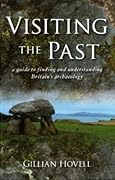<< Sites under Threat >> Shadikanni - Ancient Village or Settlement in Syria
Submitted by bat400 on Friday, 06 June 2014 Page Views: 3894
Site WatchSite Name: Shadikanni Alternative Name: Tell AjajaCountry: Syria Type: Ancient Village or Settlement
Nearest Town: Hasakeh
Latitude: 36.208140N Longitude: 40.720620E
Condition:
| 5 | Perfect |
| 4 | Almost Perfect |
| 3 | Reasonable but with some damage |
| 2 | Ruined but still recognisable as an ancient site |
| 1 | Pretty much destroyed, possibly visible as crop marks |
| 0 | No data. |
| -1 | Completely destroyed |
| 5 | Superb |
| 4 | Good |
| 3 | Ordinary |
| 2 | Not Good |
| 1 | Awful |
| 0 | No data. |
| 5 | Can be driven to, probably with disabled access |
| 4 | Short walk on a footpath |
| 3 | Requiring a bit more of a walk |
| 2 | A long walk |
| 1 | In the middle of nowhere, a nightmare to find |
| 0 | No data. |
| 5 | co-ordinates taken by GPS or official recorded co-ordinates |
| 4 | co-ordinates scaled from a detailed map |
| 3 | co-ordinates scaled from a bad map |
| 2 | co-ordinates of the nearest village |
| 1 | co-ordinates of the nearest town |
| 0 | no data |
Internal Links:
External Links:
Ancient Settlement in Syria.
Ruins of the Assyrian provincial capital Shadikanni on the Khabur River.
"Gaston Maspero, the 19th century French archaeologist, wrote that in the ninth century BCE the palaces of Shadikanni “were decorated with winged bulls, lions, stelae, and bas reliefs carved in marble brought from the hills of Singar.”
Sources: Times of Israel, and APSA2011 - Project Syria Heritage (archive link). See the comment below.
Note: Radical Islamists take hammer to Syrian artifacts
You may be viewing yesterday's version of this page. To see the most up to date information please register for a free account.
Do not use the above information on other web sites or publications without permission of the contributor.
Click here to see more info for this site
Nearby sites
Click here to view sites on an interactive map of the areaKey: Red: member's photo, Blue: 3rd party photo, Yellow: other image, Green: no photo - please go there and take one, Grey: site destroyed
Download sites to:
KML (Google Earth)
GPX (GPS waypoints)
CSV (Garmin/Navman)
CSV (Excel)
To unlock full downloads you need to sign up as a Contributory Member. Otherwise downloads are limited to 50 sites.
Turn off the page maps and other distractions
Nearby sites listing. In the following links * = Image available
27.7km NNE 19° Tell Tuneinir Ancient Village or Settlement
59.3km NNE 31° Tell Brak* Ancient Village or Settlement
65.4km S 178° Dur-Katlimmu Ancient Village or Settlement
91.4km NW 319° Tell Halaf* Ancient Village or Settlement
95.6km NE 43° Tell Qarassa* Ancient Village or Settlement
97.6km NNE 15° Urkesh* Ancient Village or Settlement
99.3km SW 233° Zalabiye Ancient Village or Settlement
108.8km NE 40° Shubat-Enlil Ancient Village or Settlement
109.6km NNE 24° Girnavaz* Ancient Village or Settlement
129.3km ENE 58° Tell Hamoukar Ancient Village or Settlement
139.4km S 188° Terqa* Ancient Village or Settlement
143.7km E 84° Rima Ancient Village or Settlement
145.1km WNW 299° Bazda Cave* Cave or Rock Shelter
151.6km WSW 258° Tell Zeidan Ancient Village or Settlement
153.4km NW 315° Sefer Tepe* Ancient Village or Settlement
154.3km W 262° Tuttul Ancient Village or Settlement
154.4km W 260° Tal al-Khwaira Ancient Village or Settlement
155.2km E 88° Taya Ancient Village or Settlement
160.2km NW 308° Karahan Tepe* Ancient Village or Settlement
160.9km NW 306° Harbetsuvan Tepesi Ancient Village or Settlement
162.5km WNW 294° Kucuk Hedbe Ancient Village or Settlement
162.5km S 180° Dura-Europos* Ancient Village or Settlement
167.5km WNW 296° Harran* Ancient Village or Settlement
174.4km NW 311° Kurt Tepesi Ancient Village or Settlement
176.4km N 2° Ziyaret Tepe Ancient Village or Settlement
View more nearby sites and additional images
<< Windfarm threat to Callanish Sleeping Beauty
Please sign the petitions against the short tunnel at Stonehenge >>






 We would like to know more about this location. Please feel free to add a brief description and any relevant information in your own language.
We would like to know more about this location. Please feel free to add a brief description and any relevant information in your own language. Wir möchten mehr über diese Stätte erfahren. Bitte zögern Sie nicht, eine kurze Beschreibung und relevante Informationen in Deutsch hinzuzufügen.
Wir möchten mehr über diese Stätte erfahren. Bitte zögern Sie nicht, eine kurze Beschreibung und relevante Informationen in Deutsch hinzuzufügen. Nous aimerions en savoir encore un peu sur les lieux. S'il vous plaît n'hesitez pas à ajouter une courte description et tous les renseignements pertinents dans votre propre langue.
Nous aimerions en savoir encore un peu sur les lieux. S'il vous plaît n'hesitez pas à ajouter une courte description et tous les renseignements pertinents dans votre propre langue. Quisieramos informarnos un poco más de las lugares. No dude en añadir una breve descripción y otros datos relevantes en su propio idioma.
Quisieramos informarnos un poco más de las lugares. No dude en añadir una breve descripción y otros datos relevantes en su propio idioma.